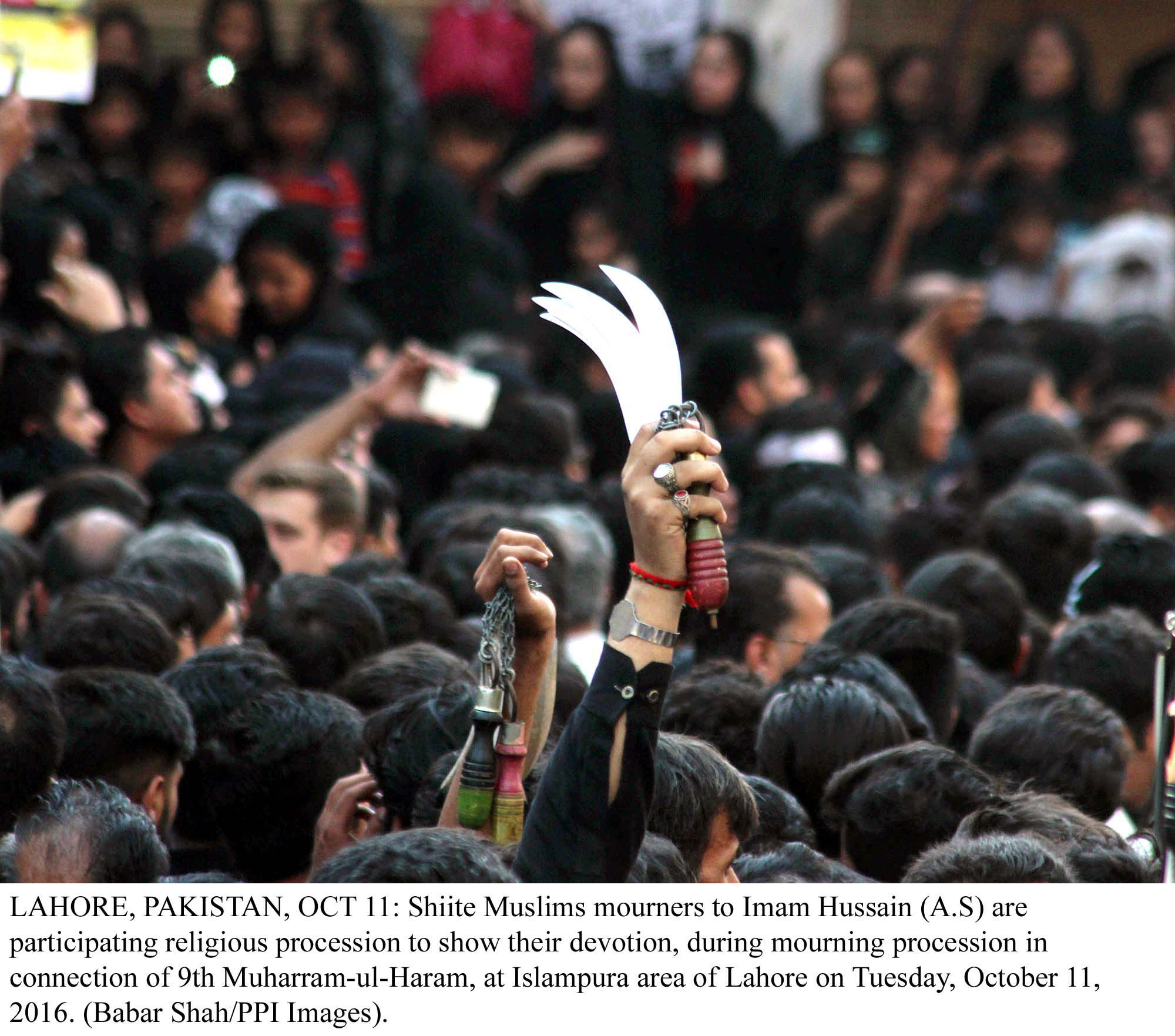
The imambargah situated on Mauj Darya Road was established in 1948 and remains one of the four points for the Zuljinnah since then. Once the procession reaches the site, participants will stay at the imambargah for half an hour and resume their journey after changing the ceremonial dress.
In March, things took an unpredictable turn when the OLMTP administration acquired land to provide a clear route for the metro train project. As a result, the imambargah and various houses in the locality were demolished.
Soon after the decision was taken, the administration of the imambargah obtained permission from the city district administration to install an alam (a symbol of reverence) on the site where the imambargah once stood. Many people still frequent the area to perform their religious activities.
All geared up
Raees Ahmed Zaidi, one of the organisers, told The Express Tribune this year it was particularly difficult for them to organise mourning processions at the imambargah during the first 10 days of Muharram.
According to Raees Ahmed, they made a series of preparations to welcome the zuljinnah procession which was taken out from Pando Street.
On Tuesday morning, he ensured the site was clean and adequate security arrangements were put in place. Space was demarcated for the procession and tents were installed.
His mother did not attend the procession as the drastic changes that have surfaced since the land was acquired for the metro train project have left her in a state of shock.
Raees Ahmed said women who had participated in processions at Imambargah Kashana-e-Fatima during previous years continued to attend majalis at the same site. However, many of them were deeply saddened by the demolition of the building.
The procession had not reached the imambargah’s site till this report was filed. According to Raees Ahmed, all arrangements have been finalised to ensure the procession completes its 30-minutes stay. However, he said participants will not be allowed to change the ceremonial dress as organisers have not made preparations for this. If suitable arrangements had been put in place, Raees Ahmed said, the organisers would have allowed participants to do so.
Shadow of memories
The imambargah comprised three kanals and 15 marlas of land. When the land was acquired for OLMTP, Raees Ahmed and his brother Saeed Zaidi – who were the owners – were given Rs1.3 million for two kanals and 15 marlas of land and Rs2.5 million for a kanal of land that was situated in a corner.
Raees told The Express Tribune arrangements have been made for women who attend processions at their new venue in Gulshan-e-Ravi. However, people cannot forget the memories attached to the imambargah’s site on Mauj Darya Road.
Restricted access
Like previous years, police refused to allow the zuljinnah procession to enter the courtyard of Syed Mauj Darya’s shrine after residents raised objections.
The procession would instead enter the street of the shrine to the house of late Syed Ghazanfar Ali Shah Bukhari (late). Syed Ghazanfar Ali Shah used to invite the zuljinnah procession to pass through his house since 1984 after birth of his son Syed Yahya Shah Bukhari. Since 1994, a few residents objected and complained to the police. They urged the police not to let the zuljinnah procession to move beyond Syed Ghazanfar Ali Shah’s residence. As a result, the police blocked the route.
Syed Yahya Shah told The Express Tribune people who had raised objections over the arrival of the procession had left their houses after they were acquired for OLMTP.
“And yet, the police is not allowing the zuljinnah procession to come forward,” he added.
Published in The Express Tribune, October 12th, 2016.





1732012115-0/Untitled-design-(14)1732012115-0-270x192.webp)











COMMENTS
Comments are moderated and generally will be posted if they are on-topic and not abusive.
For more information, please see our Comments FAQ